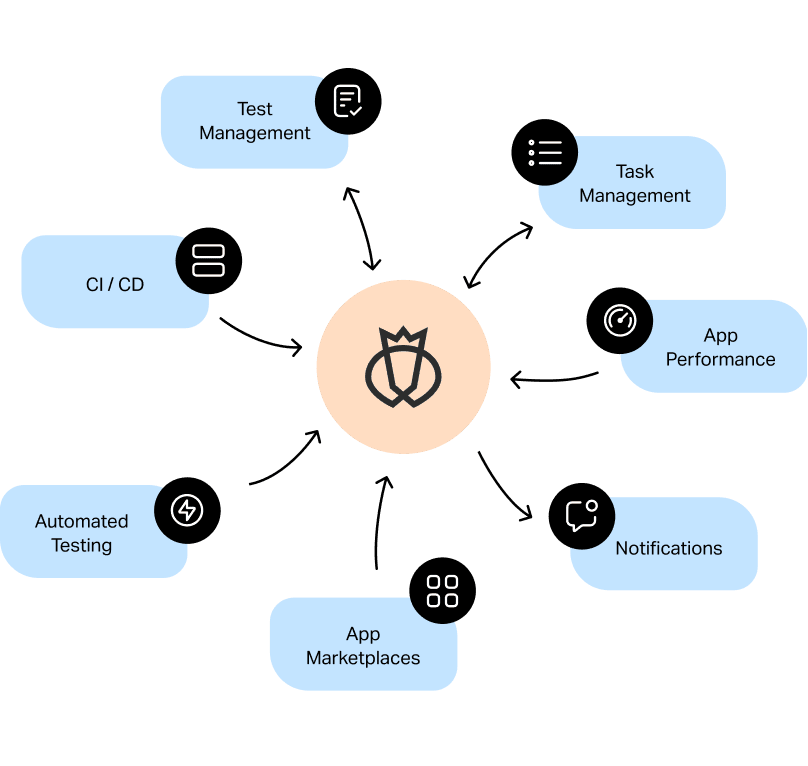From Guidebook to Automated Testing: A Comprehensive Overview to Transitioning Smoothly and Properly
In the world of software application testing, the change from guidebook to automated procedures has actually become a significantly crucial shift for companies seeking to enhance performance and accuracy in their screening techniques. The trip from guidebook to automated screening is not without its difficulties, however when approached strategically and with a clear plan in mind, the advantages can be substantial.
Benefits of Automated Testing
Automated testing offers numerous advantages, enhancing efficiency and accuracy in software program development processes. Automated examinations can be run concurrently on multiple devices and running systems, drastically speeding up the screening phase compared to hand-operated testing.
In addition, automated testing makes sure a higher level of accuracy in spotting issues. Because automated examinations adhere to predefined manuscripts, human error is lessened, resulting in more trusted test outcomes. Uniformity in testing is also boosted, as automated tests execute the exact same actions specifically each time they are run. This uniformity is crucial in ensuring that all capabilities of the software application are completely evaluated, minimizing the chance of undetected pests sliding via to production.
Picking the Right Tools

To start with, assess your requirements and goals. Recognize the scope of your job, the innovations involved, and the ability set of your team. This analysis will assist you establish the features and capabilities you need in your testing devices.
Second of all, take into consideration the compatibility of the tools with your existing procedures and systems. Seamless assimilation with your current software development lifecycle is necessary to guarantee a smooth change to automation.
Additionally, evaluate the scalability and flexibility of the devices. As your testing needs develop, the devices must be able to adjust and suit modifications efficiently.
Last but not least, factor in the support and area around the devices. When carrying out automated testing, robust assistance and an active individual community can give valuable sources and support. By carefully taking into consideration these aspects, you can pick the right devices that align with your demands and established the phase for an effective change to automated testing.
Writing Effective Examination Scripts

When crafting examination scripts, it is necessary to think about the particular demands of the software program being checked and ensure that the manuscripts resolve all important performances. Detailed and clear naming conventions for examination manuscripts and test situations can enhance readability and maintainability. Furthermore, including error handling systems within the examination scripts can aid in determining and resolving concerns immediately.
Additionally, arranging test scripts right into modular elements can boost reusability and scalability, decreasing redundancy and improving efficiency in test manuscript upkeep. Regular reviews and updates to examine manuscripts are vital to equal evolving software application requirements and performances. By following these concepts, testers can produce robust and reliable examination scripts that contribute substantially to the success of automated testing procedures.
Integrating Automation Into Workflows
By flawlessly incorporating automated screening tools like Selenium or Appium into the software program development lifecycle, teams can attain faster comments on code modifications, leading to quicker bug detection and resolution. This combination allows for constant screening throughout the advancement procedure, making sure that any type of issues are determined early on, resulting in higher software quality. Correct integration of automation devices calls for cooperation between development, testing, and procedures groups to establish a unified operations that enhances performance and efficiency in providing top notch software application products.
Making Sure a Smooth Change
Efficiently transitioning to automated testing entails thorough preparation and mindful execution to maximize and lessen interruptions look at this now performance in the software program development look at this now process - automation testing. To make sure a smooth change, it is vital to begin by conducting a comprehensive assessment of the present testing procedures and recognizing locations where automation can bring the most considerable benefits. Involving with all stakeholders early on in the process, including programmers, testers, and task supervisors, is essential for amassing assistance and buy-in for the automation initiative
Communication is vital throughout this change phase. Clear interaction of the objectives, benefits, and expectations of automated screening aids to handle any resistance or concerns that may emerge. Furthermore, providing ample training and sources for staff member to upskill in automation devices and strategies is essential for guaranteeing an effective shift.

Verdict
In final thought, transitioning from guidebook to automated testing uses many benefits, consisting of increased performance and dependability. By picking the appropriate devices, writing efficient examination manuscripts, and incorporating automation perfectly right into workflows, organizations can guarantee a smooth and successful transition. It is necessary to embrace automation as an important possession in software program screening processes to improve overall top quality and performance.
In the realm of software screening, the change from handbook to automated processes has actually come to be an increasingly crucial transition for organizations seeking to enhance efficiency and precision in their screening techniques. Automated tests can be run simultaneously on numerous gadgets and operating systems, significantly speeding up the screening phase compared to hands-on testing. Uniformity in testing is additionally boosted, as automated examinations implement the exact same actions exactly each time they are run.To make sure the successful implementation of picked testing tools, the development of efficient examination scripts plays a crucial function in confirming the functionality and efficiency of automated go to my blog processes - automation testing. By adhering to these principles, testers can produce reliable and robust examination manuscripts that add considerably to the success of automated screening procedures